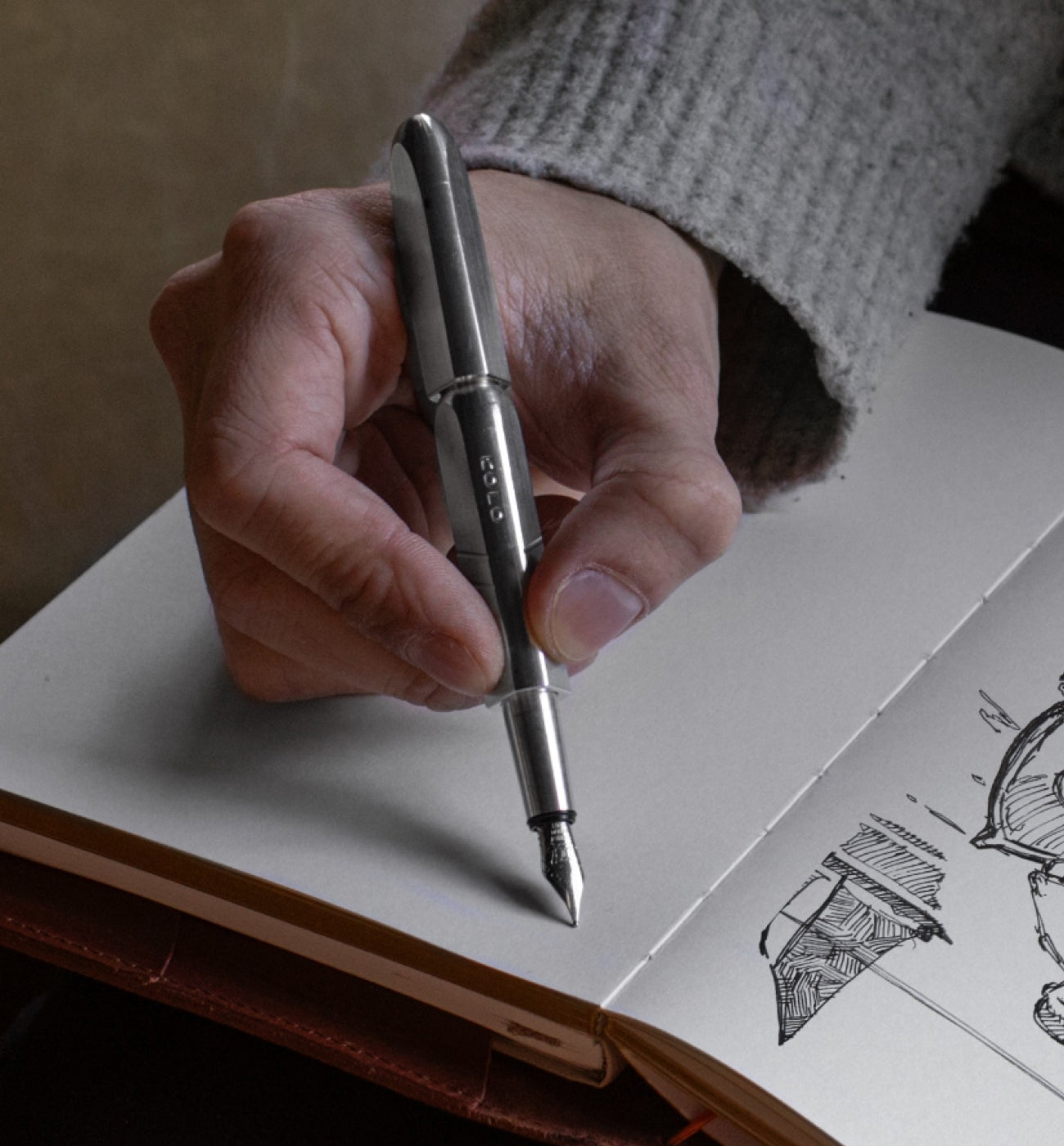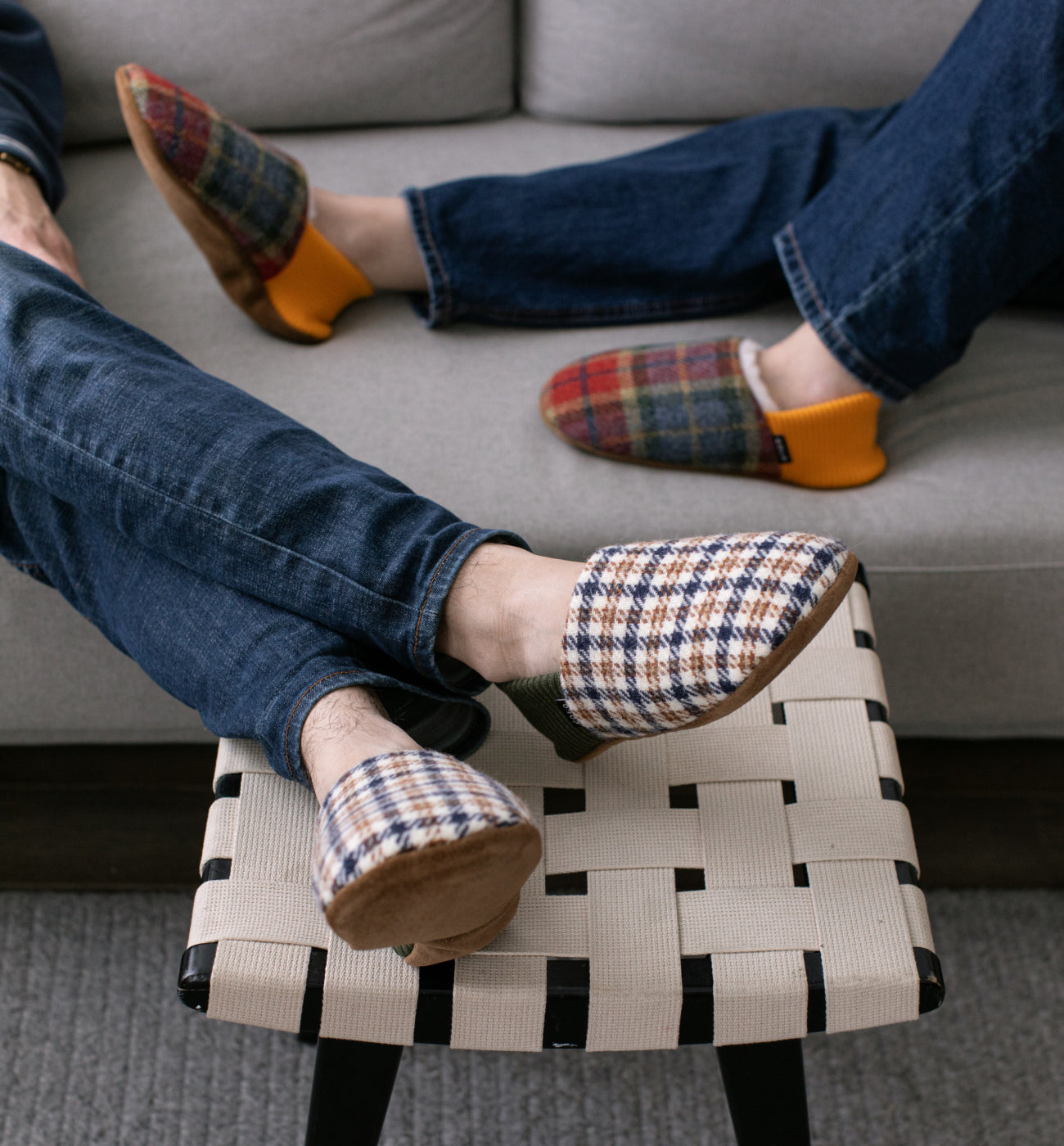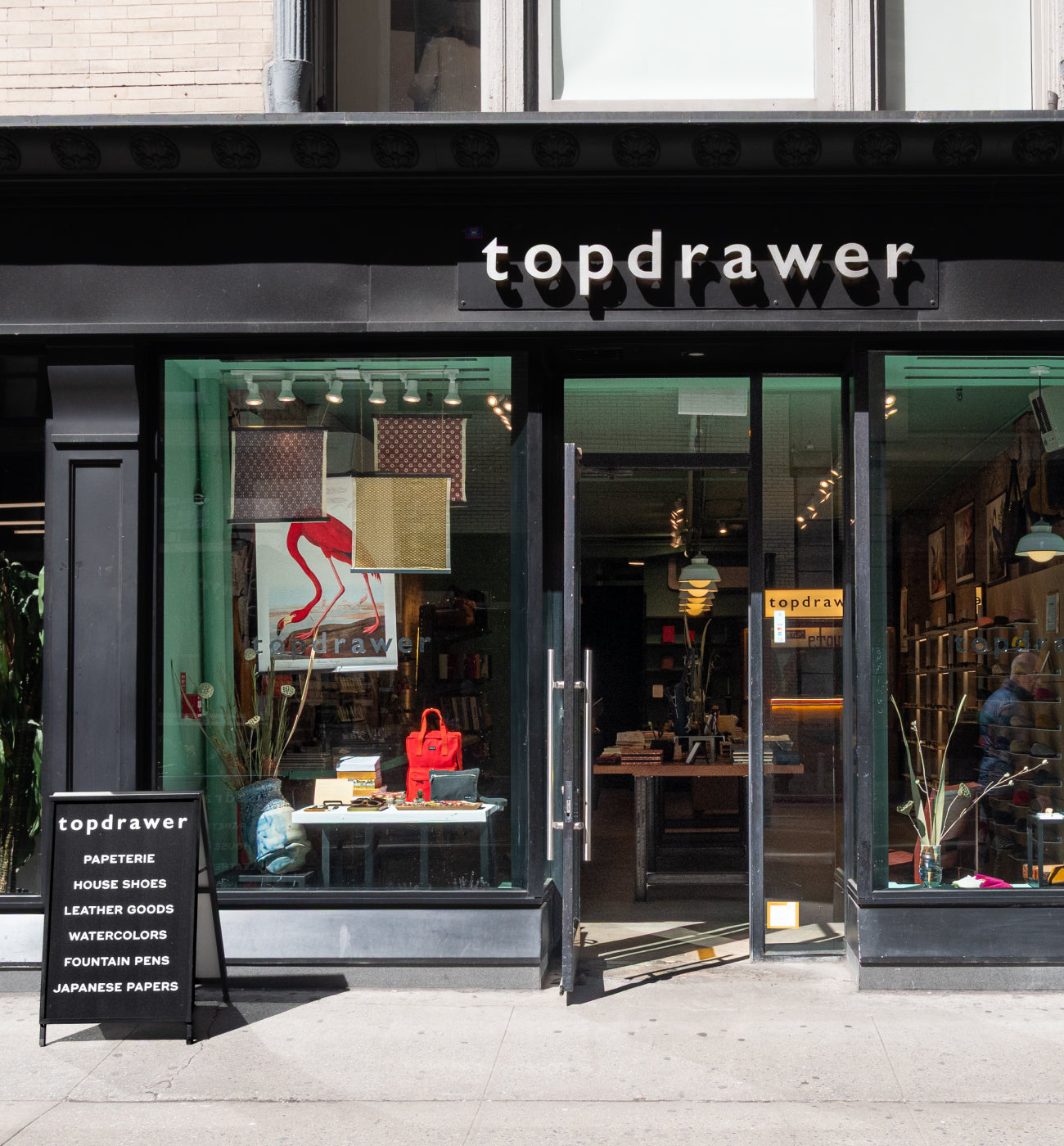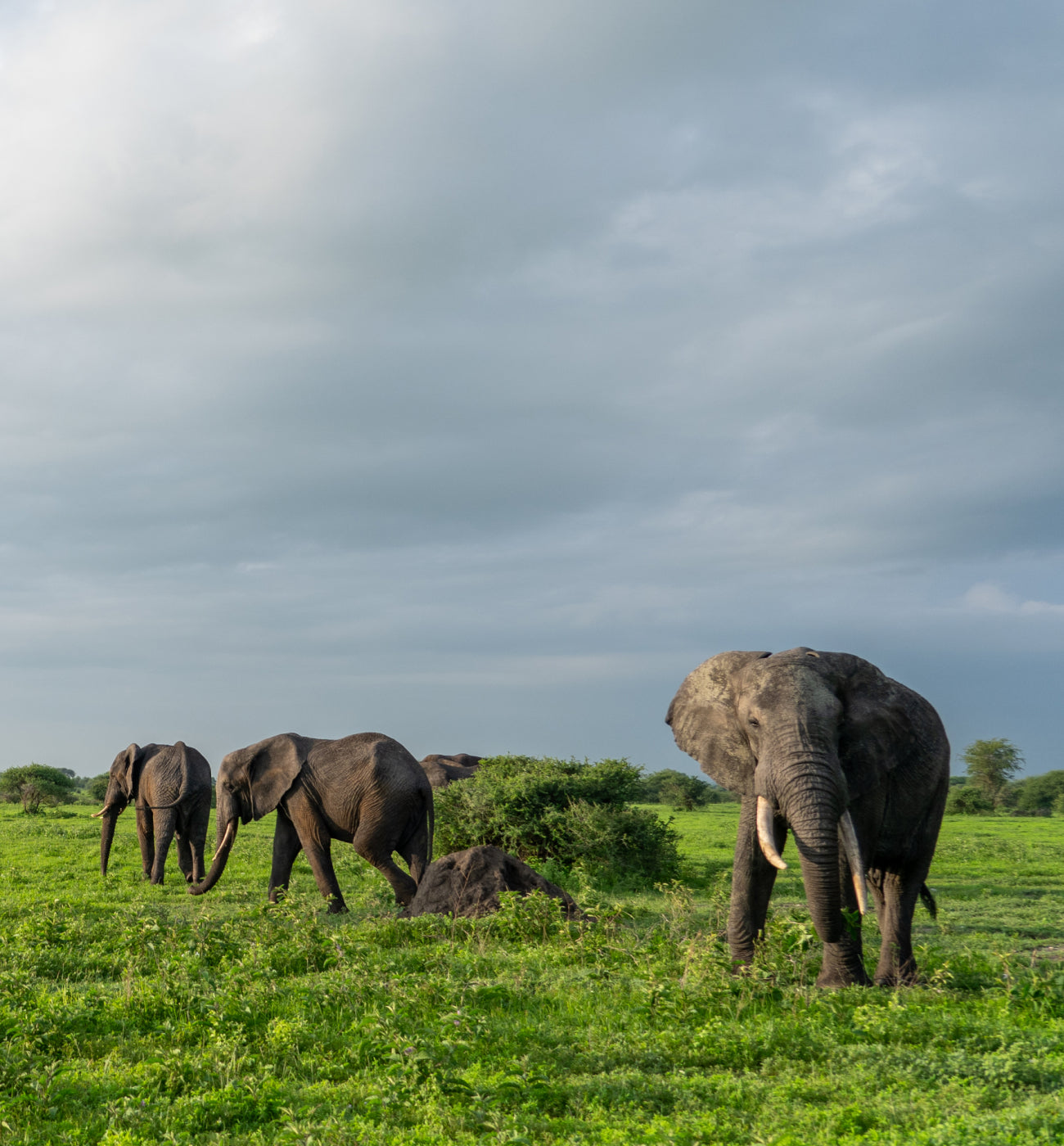
Topdrawer
That philosophy is embedded in our Maison brand, Kolo—a name that stands for beautiful function, enduring quality, and mindful design. Whether it’s a waxed cotton rucksack, a finely balanced fountain pen, or a wallet cut from vegetable-tanned leather, Kolo reflects our core belief: the most sustainable object is the one you never have to replace.

A World Worth Creating For
Our products only matter if there’s a world vibrant enough to enjoy them in. That’s why environmental responsibility isn’t an initiative—it’s part of our design philosophy. We make tools for creative people—pens, paper, bags, leather goods, and house shoes. We believe most tools should last a lifetime, or longer.

Materials That Matter
We’re deeply intentional about what we use—and what we won’t. We use certified organic cotton in our Kolo waxed canvas bags because conventional cotton is one of the dirtiest crops on the planet. A single T-shirt made from conventionally grown cotton can require a pound of chemical pesticides and enormous amounts of water. It’s unsustainable. Using organic cotton makes a tangible difference to the soil, the water, and to all of us.
For example, we source natural wool tweeds from Scotland for some of our house shoes—wool is one of the most renewable, biodegradable, and enduring materials available. Over the past several years, we’ve nearly eliminated the use of plastics in all packaging.
For our leather goods, we only use vegetable-tanned leather, the oldest and cleanest method of tanning, free of chrome and synthetic additives. We extend this standard to every brand we work with.

Small Company. Big Intent.
We’re not a giant company. We are small. But we believe that small, committed companies can make a big impact—especially when they make lasting things, slowly and carefully. We evolve every season toward better materials and smarter methods, and we invite our community to walk with us. And we know from our raw material suppliers, that Topdrawer is influencing several big brands for the better.
Our products are made by creative people for creative individuals who care about craft, quality, and what kind of world they’re building. We’re with you.

1% For The Planet
In 2022, we joined 1% for the Planet. We now donate 1% of all sales from Kolo Bags, Kolo Leather Goods, Kolo Pens, and Kolo Paper to nonprofit organizations dedicated to protecting endangered wildlife and preserving ecosystems in Africa. For a small business like us, this was a big challenge since it is derived from a percentage of gross sales, not profits, which can be manipulated. But it is fundamental to our design team and all our employees to be supporting meaningful non-profit organizations that are vetted by the remarkable team of people at 1% for the Planet.
Creativity is a force for good. So are the Topdrawer tools that support it.


